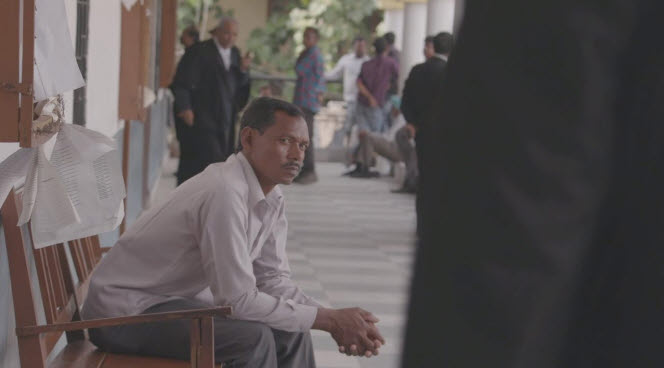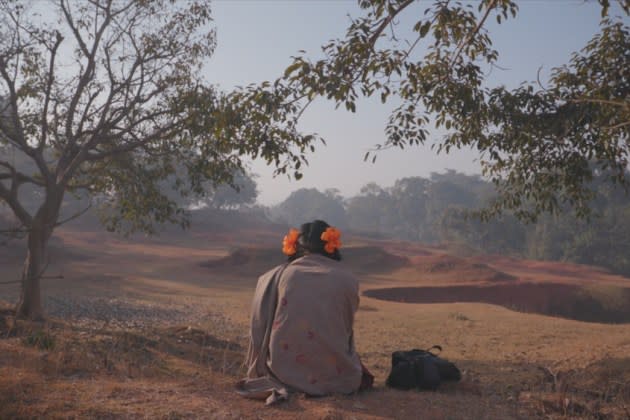Documentary film “To Kill a Tiger”, which recently received a Best Documentary Oscar nomination, is a calm but empathetic as following one Indian country farmer’s long and difficult personal journey for the justice for his young daughter who was brutally raped by three men. While it is sometimes infuriating to see numerous unjust things he and his family had to cope with in their pursuit of justice, it is also touching to see how they still stood by his daughter to the end, and those quiet but powerful moments in the documentary will linger on your mind for a while after it is over.
The central figure of the documentary is Ranjit, a farmer who has lived with his family in one little rural village of Jharkhand, India. On one day of 2017, his 13-year-old daughter happened to left alone at a wedding ceremony held inside the village, and Ranjit was devastated when she later returned and then told him everything about her rape incident. He subsequently decided to report this to not only the district chief but also the local police, but, not so surprisingly, things did not go that well for him and his daughter right from the very beginning. Almost everyone in the village including the district chief was not so pleased about this, and they even suggested that he should marry his daughter to one of those rapists just for saving his daughter from more disgrace while also maintaining the status quo of their small community.
However, Ranjit did not stand back at all as trying more for the justice for his daughter. Fortunately for him, he was later approached by an organization dedicated to female rights, and that certainly helped him to some degree. After all, he was ostracized a lot by many people in the village because what he did for his daughter, and he certainly needed some moral support from this organization as being more pressured from those villagers day by day.
Director/writer/co-producer Nisha Pahuja, who is incidentally an Indian-born Canada filmmaker, and her crew members closely followed Ranjit and several people from that organization for more than one year, and we get to know more about what Ranjit often had to endure in his village. As the camera of cinematographer Mrinal Desai calmly looks at him, Ranjit phlegmatically talks about his and his family’s ongoing predicament, and we can only imagine how much he has struggled behind his ever-gentle façade, which breaks a bit a few times throughout the documentary.
We also meet a number of villagers, who casually express their bigotry without any shame and hesitation to our shock and disgust. Nearly all of them say that Ranjit did not have to make such a big fuss to bring disgrace to their little community, and they also blame Ranjit’s daughter a lot. In case of a certain important figure in the village, he looks so impertinent as angrily arguing against Ranjit’s decision, and it is rather amazing that he willingly appeared in front of the camera without having his face blurred.
It is no wonder that Ranjit sometimes had doubts on whether he was really doing the right thing – or whether he and his family would eventually get the justice for his daughter as they all hoped. As a poor farmer who has to support his wife and children everyday, he surely had lots of stuffs to handle besides paying more attention to the upcoming trial for those rapists, and this naturally made several members of that organization a bit uneasy. They were all willing to go all the way for Ranjit and his daughter, but they really needed Ranjit to show more will and determination in his pursuit of justice, and that made Ranjit more pressured than before.
His daughter’s rape case eventually went to the court, but the system did not seem to be that helpful even though those rapists were jailed for the upcoming trial. The female lawyer assigned to the rapists gladly talks about how weak the case is from the beginning, and you may be more disgusted by how she regards the case without much consideration on Ranjit’s daughter. The following trial process, which is not shown at all in the documentary, turned out to be much more frustrating than expected, and a police officer assigned to the case was so clumsy and incompetent in his case investigation that even the judge presiding over the case chided him directly for that.
The documentary also focuses on Ranjit’s daughter, who incidentally allowed Pahuja and the crew members to show her in the documentary during its post-production period. Like any rape survivor, she is still affected a lot by what happened to her on that terrible day, and she usually remains silent whenever the camera looks at her. However, she eventually comes to open herself a bit more as time goes by, and the documentary handles this little private moment with thoughtful care and respect. Around the point where the outcome of the trial depends a lot on her, she is really ready for telling her whole story, and the following moment, which is only driven by her own words, is restrained but very poignant to say the least.
On the whole, “To Kill a Tiger”, whose title comes from what Ranjit says around the end of the documentary, did a respectful job of presenting its important social issues via a little but undeniably moving human story. After the #MeToo movement was started in 2017, we saw some significant changes during next several years, but our world still needs to be changed much more for millions of women around the world, and the documentary will surely remind you of that again.











Pingback: My Prediction on the 96th Academy Awards | Seongyong's Private Place